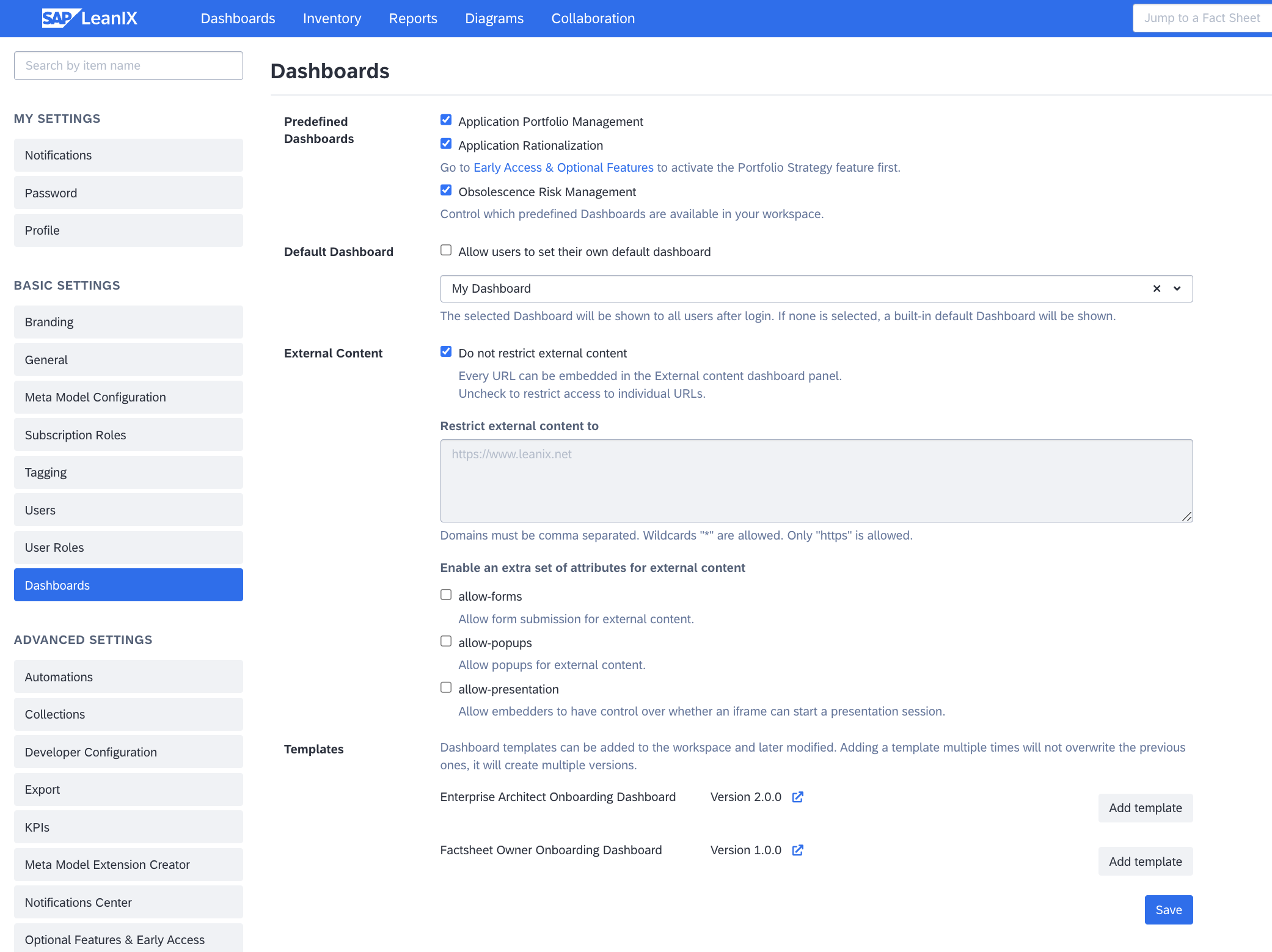Dashboards Settings
Configure dashboard settings and add specific dashboards to the workspace.
Overview
The dashboard is the central hub where you can consolidate and present key information and metrics about your enterprise architecture management data in an organized and easily accessible way. You can use reports, diagrams, charts, graphs, and summaries to provide a quick overview of your enterprise architecture management data and performance.
This guide focuses on various administrative settings that workspace admins can manage. To learn how to create and edit dashboards to consolidate data from various sources into a single, easy-to-navigate view, see Dashboards.
You can configure dashboard settings for the workspace in the Dashboards section of the administration area. When applying changes, ensure to save them before leaving the page.

Dashboard Settings in the Administration Area
Predefined Dashboards
You can activate predefined dashboards tailored to specific use cases by enabling respective checkboxes in the Predefined Dashboards settings group. Users can not edit or delete predefined dashboards.
Default Dashboard
To allow users to set their own default dashboards, in the Default Dashboard settings group, select the Allow users to set their own default dashboard checkbox.
To set a default dashboard for the workspace, select it from the list. Predefined dashboards can not be set as default.
External Content
You can restrict URLs that users can embed in the External Content dashboard panel. By default, any URL can be embedded. Adjusting these settings is especially relevant when embedding content from third-party systems such as BI tools.
- To block specific URLs, in the External Content settings group, deselect the Do not restrict external content checkbox, then enter URLs to be blocked in the Restrict external content to box.
- To allow embedding any URLs, select the Do not restrict external content checkbox.
You can also decide whether you want to allow pop-ups, form submissions, and iframe elements from external URLs by using the appropriate checkboxes.
Tip
When embedding content from external systems, such as business intelligence tools, into dashboards, configure the appropriate settings to publish content externally without making it available to everyone.
Dashboard Templates
You can activate onboarding dashboards and make them available to all workspace users as templates. To do that, in the Templates settings group, click Add template for the template that you want to add, then confirm your action.
Once added, the dashboard template appears in the All Dashboards and User-Defined sections of the dashboards page. This doesn’t replace or delete existing dashboards of the selected type. Adding a template that was added previously creates a new dashboard version. Users can modify the dashboard or create a new one from the template.
To learn more about onboarding dashboards, refer to:
Updated 3 months ago
